There are three aspects of Buddhist monasteries that make them interesting to visit: their very showy architecture and decoration, their history and the places where they are located. Here you will find a small guide, with a map and the list of all monasteries in the area with the basic details of each.

MONASTERIES BETWEEN KHARIKHOLA AND NAMCHE
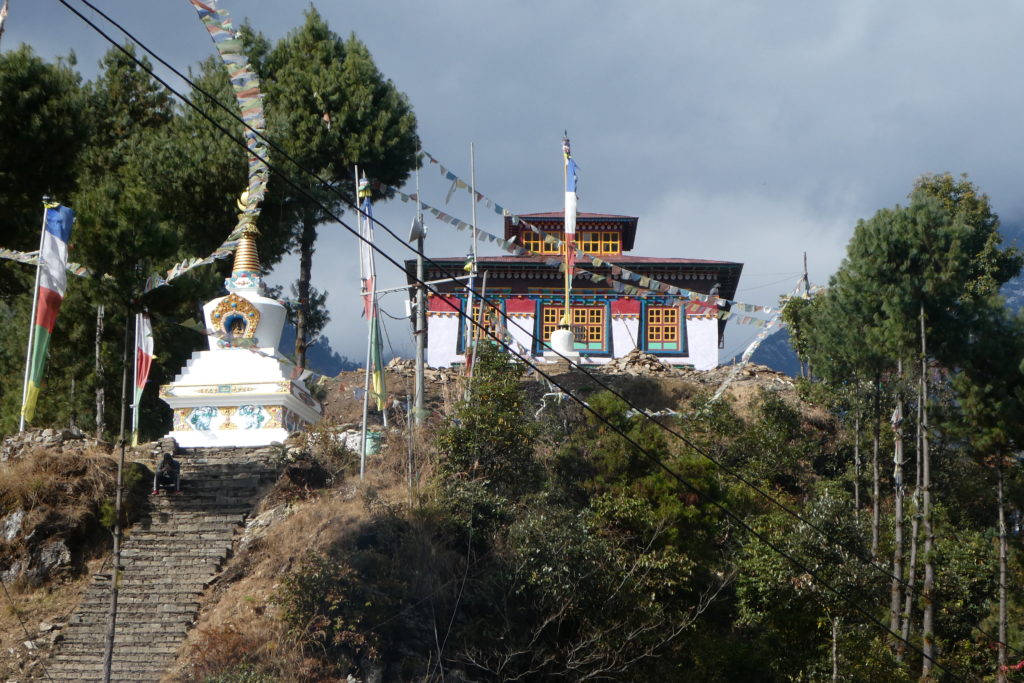
Kharikhola - Pema Namding Gompa (2,100 m) Founded in 2008. Currently in repair works, nobody lives. Located next to the school, at the end of the village, with spectacular views over the valley. Outside visit is allowed.
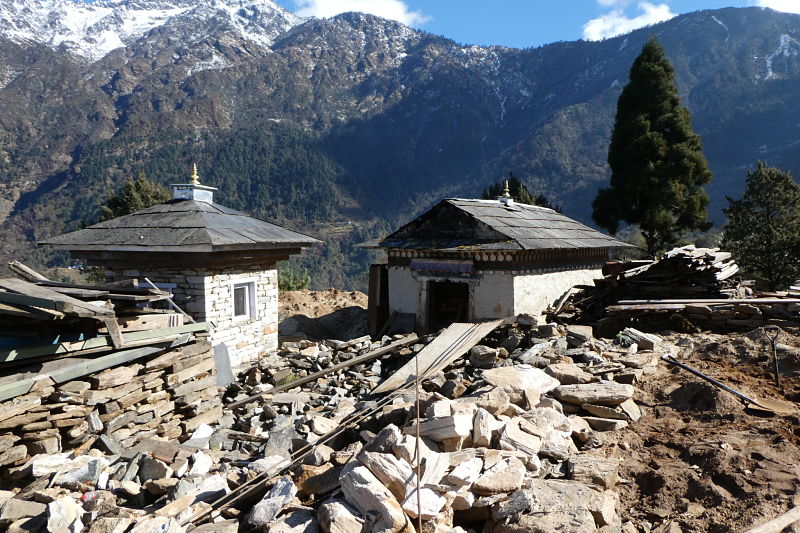
Pangom - Nandoling Gompa (2,562 m) Located half an hour from Kharikhola, just below the village of Pangom. It is reached along the path to Mera Peak. The original monastery was more than two centuries old. It was completely damaged by the earthquake of 2015 and currently (December 2019) is under reconstruction.
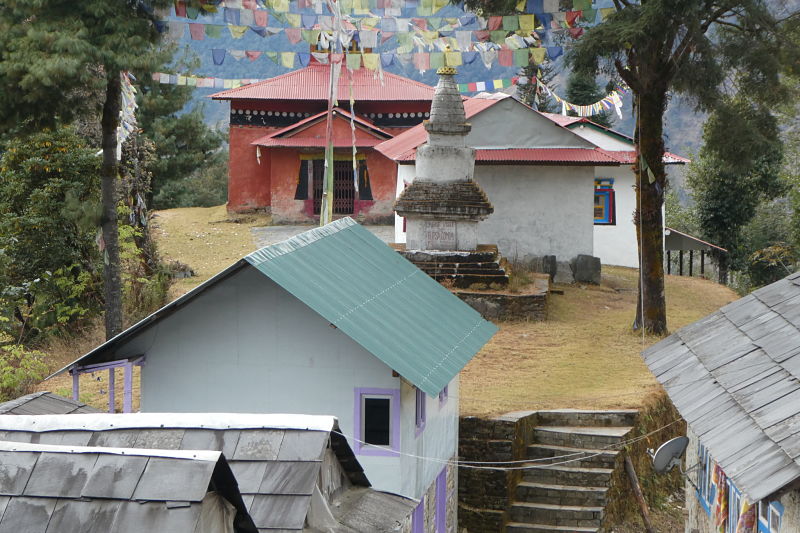
Bupsa – Bupsa Gompa (2,360 m) A very old small monastery located in the hamlet of Bupsa just above Kharikhola on the way to Lukla. Currently closed down. The outside visit is allowed.
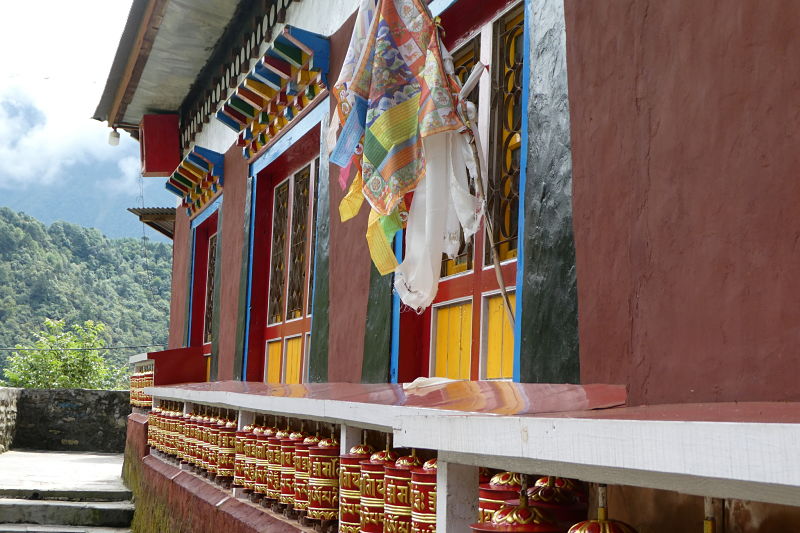
Chaurikharka - Sanga Chholing Gompa (2,713 m) Modern monastery in very good condition. Located next to the village school. Nobody lives there. Visits are allowed.
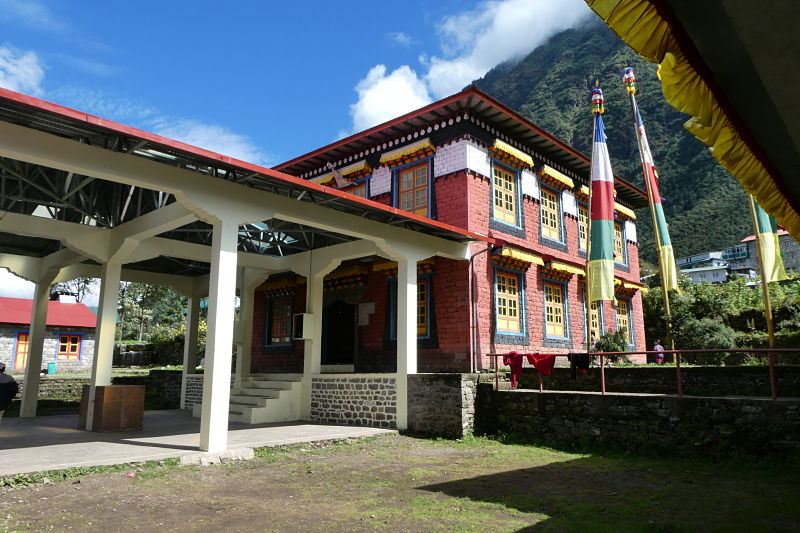
Lukla - Lukla Kemgun Gompa (2,860 m) Built in the early Eighteenth century and renovated and enlarged 20 years ago. There are 25 lamas and 15 novices living on it. Next to it there is a thangka school (Tibetan paintings on different supports). There is a boy who is the reincarnation of the former reincarnate lama, who died 6 years ago. Visits are allowed.
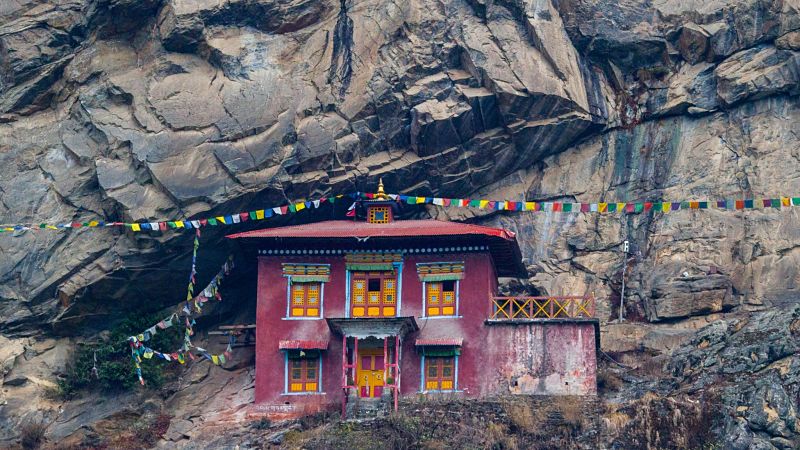
Chheplung – Rangdo Gompa (2,700 m) A small old monastery, built under a cliff, just above the village of Chheplung. The outside can be visited. Nobody lives there.
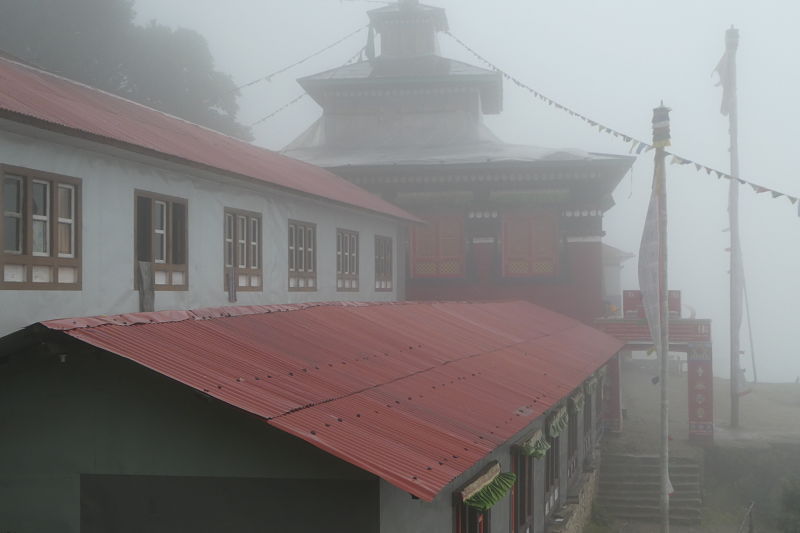
Rimijung (or Thulo Gumela) 1 - Pema Chholing Gompa (2,865 m) Located at a 15-minute walk from the village of Phakding, it is one of the 3 oldest monasteries in the area. Founded by Lama Khyenpa Dorje, it was built between 1667 and 1672. After the earthquake of 2015, it was seriously damaged. Reconstruction works finished at the beginning of 2019 thanks to the many donations that were received, especially from China and South Korea. It has gone through many ups and downs but currently there are 30 lamas as well as 3 reincarnate lamas, that are 3 brothers (an unusual fact). Visits are allowed.
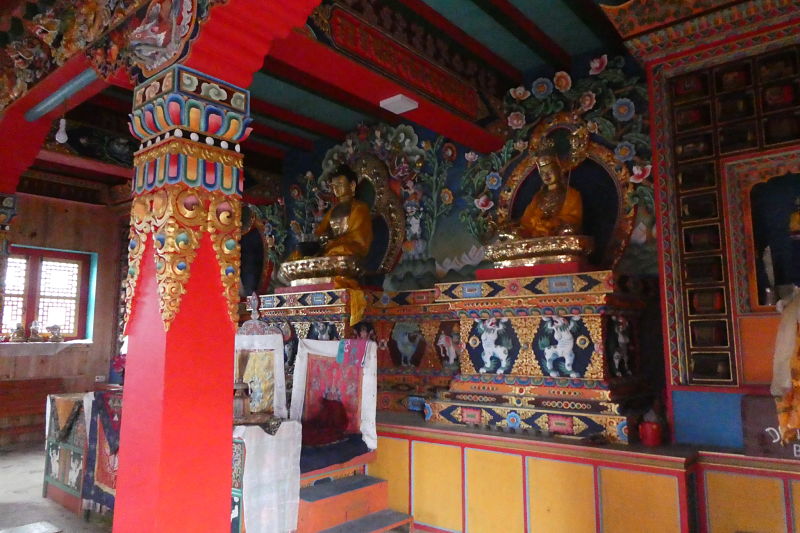
Rimijung (or Thulo Gumela) 2 - Thaktyo Dorje Photang Tekhongma Gompa (2,931 m) This monastery, newly built at the beginning of 2020, is located a little further up the Pema Chholing Gompa (5 min walk). Founded by the 3 reincarnated lamas. At the moment only one of the three brothers and a Tibetan lama, who takes care of the monastery, live on it. Visits are allowed.
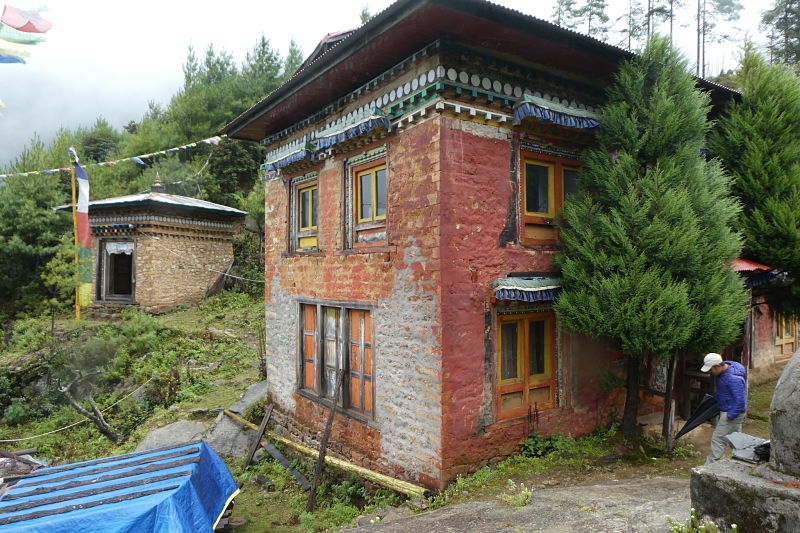
Monju (or Monzo) 1 - Utche Chholing Gompa (2,828 m) Small monastery, very old and in very bad condition, is located beside the village school and can only be visited by the outside.
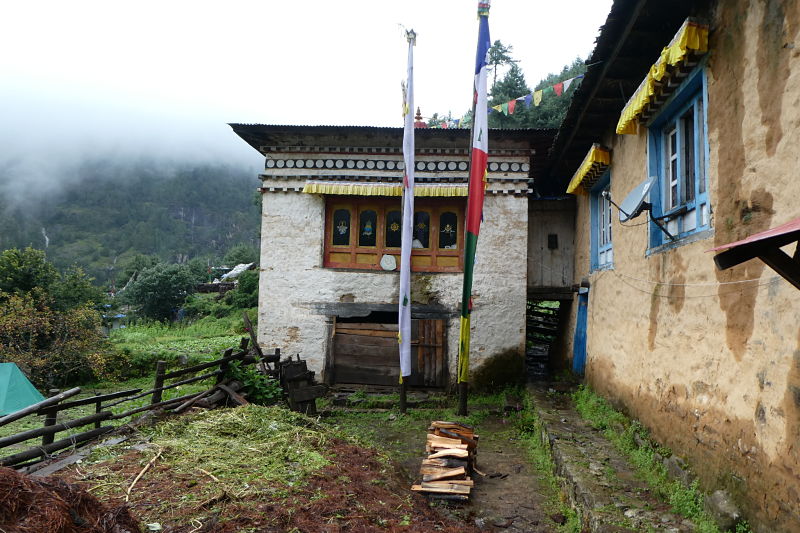
Monju (or Monzo) 2 – Private Monastery (2,828 m) This small monastery was built by a family of the village and it is part of the family house. It is a good example of private monastery. It is in a poor state of preservation. Visits are allowed.
KHUMBU MONASTERIES
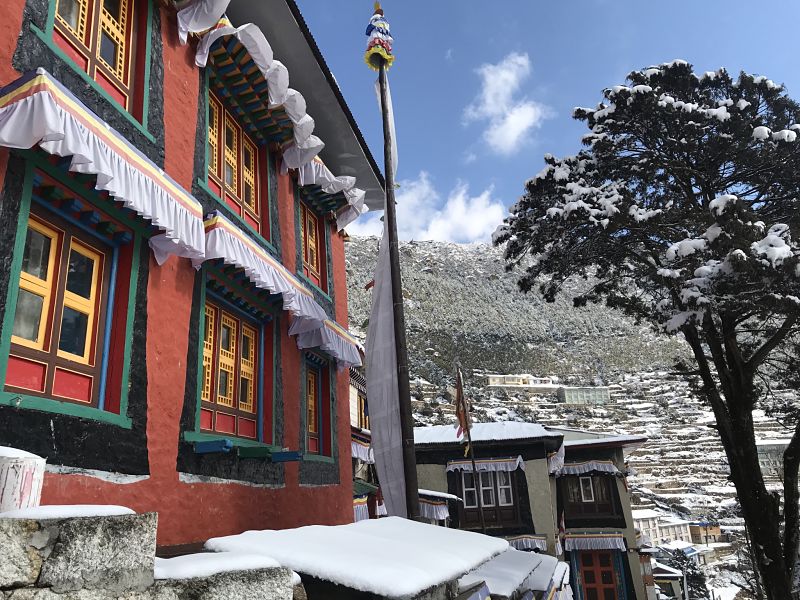
Namche – Namche Gompa (3,450 m) Built in the early Eighteenth century, it fell into disuse and was not until 1905 that was built as it is now. You can visit it. Just live permanently a lama who takes care of maintenance and provides visits. The Sherpa community of Namche uses it, in addition to religious activities, as a meeting place for social activities. There is a management committee that is in charge of collecting funds for the maintenance of the monastery. The main events that take place here are the Dumji festival in late June and the spiritual retreat Nyungne in early August. Good panoramic view of Namche.
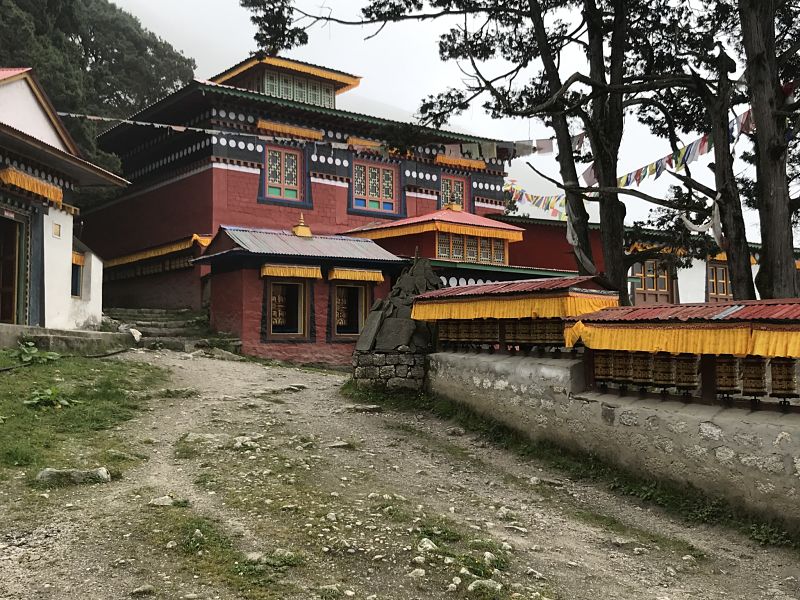
Khumjung - Samten Chholing Gompa (3,790 m) Monastery founded in 1831, located in the middle of the village of Khumjung. Nobody lives there but visits are allowed.. They also exhibit a supposed skull of a yeti.

Khunde - Tsam Kham Gompa (3,900 m) Monastery founded in 1972 by Lama Tenzing Chendum. There are 12 lamas living there. It has good views over the villages of Khunde and Khumjung. Visits are allowed.
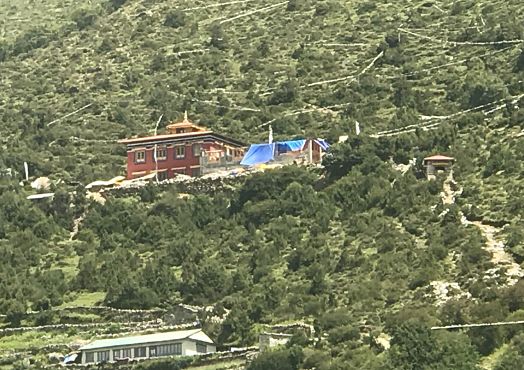
Phortse - Takri Choling Gompa (3,850 m) Founded in 1997 by the benefactor Anthony John Freak (Papa Tony) who helped to build many other infrastructures in the village such as the school or electric mini-power station. Currently (March 2020) is under reconstruction after in 2015 was very damaged by the earthquake. It is located in the upper part of the village with very good views over the valley.
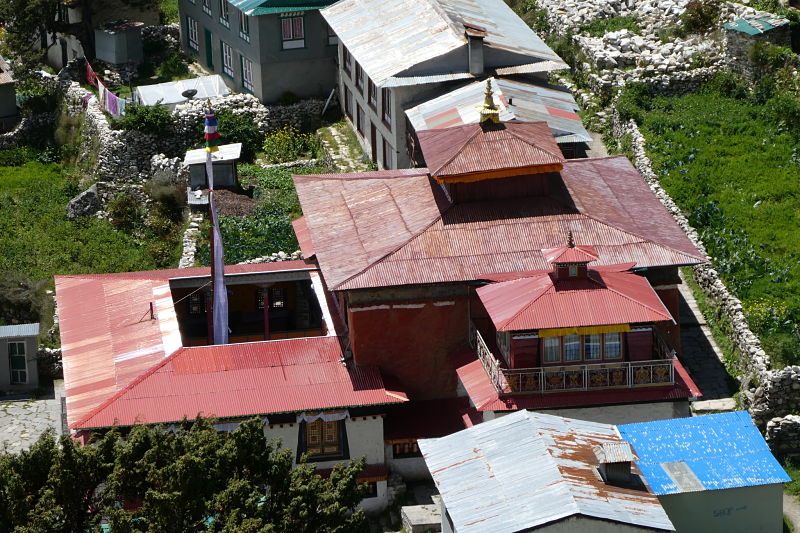
Pangboche 1 - Pal Rilbu Gompa (4,012 m) Another of the first three monasteries in the area, founded in 1667 by Lama Sangwa Dorje. Nowadays there is only one lama living there who is in charge of the maintenance and provides visits. It is located in the middle of the upper part of the village and they exhibit a supposed skull of a yeti. Until the end of the years 1950 also exhibited an alleged hand of a yeti that disappeared in circumstances not clarified.
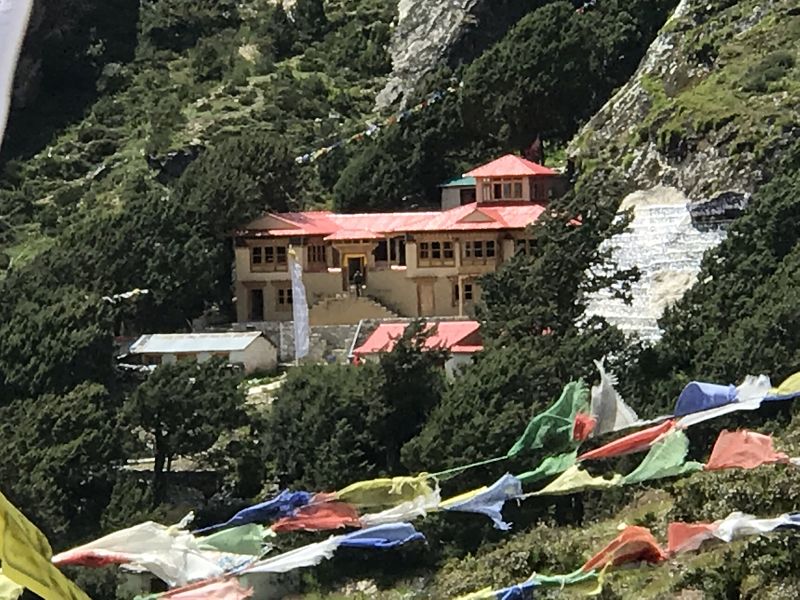
Pangboche 2 – Pangboche Gompa (4,050 m) Modern monastery located under a cliff above the village. It was founded by the reincarnate Lama Die Reporchhe, who lives there along with a small community.
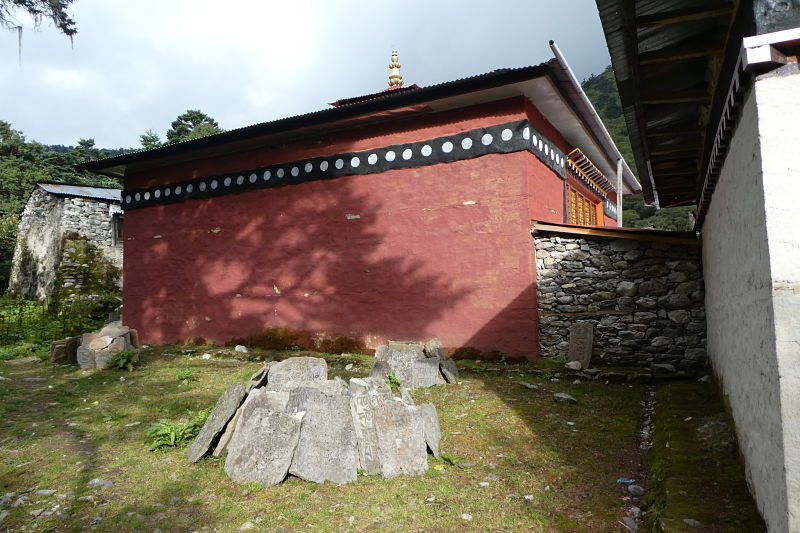
Debuche – Pema Chholing Nunnery (3,758 m) Located in the hamlet of Debuche, about 20 minutes from the monastery of Tengboche and in the middle of a rhododendron forest, the oldest monastery of anis (Buddhist nuns) in Nepal was founded in 1925 by Chatang Chothar (Lam Gulu) who had also founded the monastery of Tengboche few years earlier. Currently there are 3 or 4 anis living there in very precarious conditions. Visits are allowed.

Tengboche – Thyangche Dongak Thakchok Chholing (3,884 m) This monastery is undoubtedly the best known of the whole area because it is located on the trail that goes towards the Everest and is a regular stop either on the way up or down. In addition, the Mani Rimdu festival, that is held in November, has become a great tourist attraction that brings people from all over the world. It was built between 1916 and 1919 under the impulse of Chatang Chothar (Lama Gulu), in the top of a ridge in a place where there was nothing but with spectacular views of all the mountains of the valley that from Namche climbs to the foot of Everest. In 1933, a strong earthquake destroyed it and in 1989, a fire turned it into ashes. In both cases it was immediately rebuilt thanks to the work and contributions of the Sherpas and, in the case of the fire, also with aid from international institutions. The present abbot, Ngawang Tenzin Zangbu (Tengboche Rinpoche) is the reincarnate of the Lama Gulu , founder of the monastery. Currently there are about 40 lamas. Visits and some ceremonies attendance are allowed.
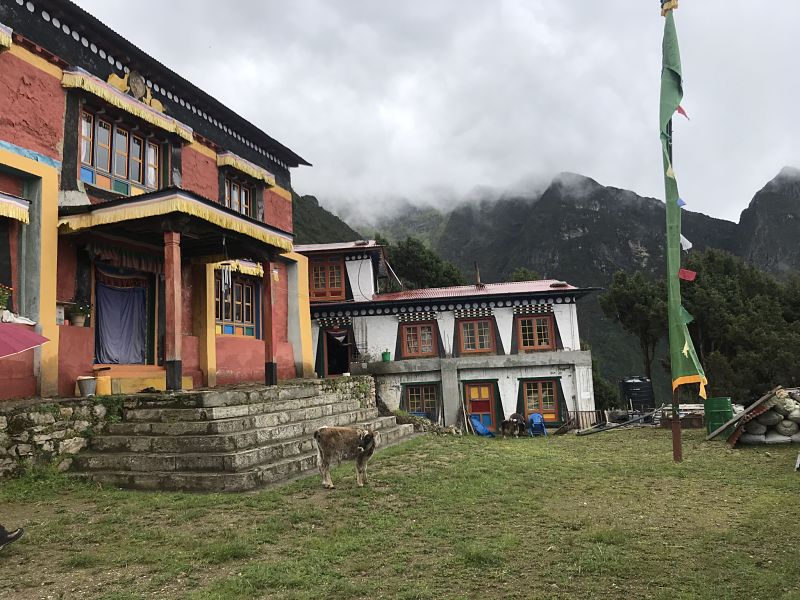
Mende – Lawudo Gompa (3,885 m) It is situated above the hamlet of Mende in a place with a nice view over the village of Thamo. Founded in 1967 by the Lama Thupten Zopa Rinpoche, it has become a well-known international meditation centre. It depends on the Kopan Monastery of Kathmandu. There are not permanent lamas living there. Only 3 or 4 people are in charge the maintenance and visits. Around the monastery there are several buildings for accommodation and a small library.
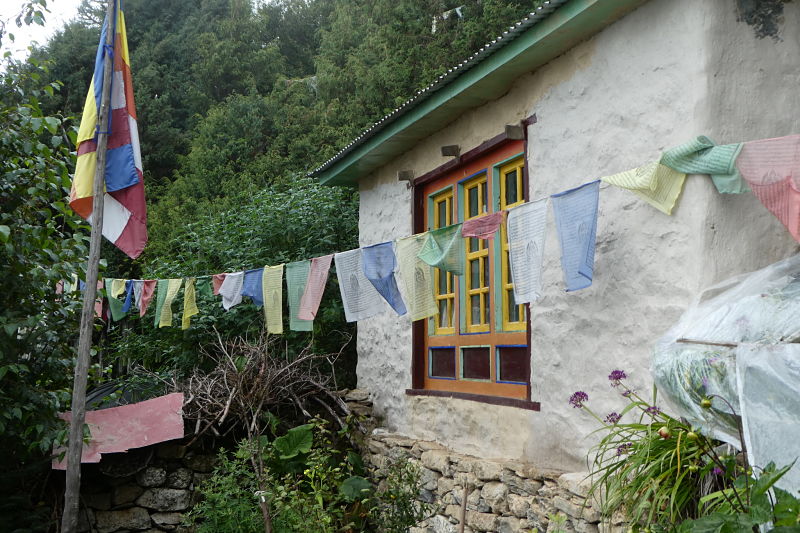
Thamo 1 – Gendukpa Gompa (Gamu Phuk) (3,838 m) Built next to the Gamu Cave and in the midst of a very lush forest over the village of Thamo, it was founded by Lama Thupten Zopa Rinpoche. Today a lama with his wife live there and take care of the monastery. There is a young boy who is a reincarnate of the former Lama and is currently being educated in Kathmandu. The surrounding area of the monastery is plenty of old thangkas which are overprinted with prayers.
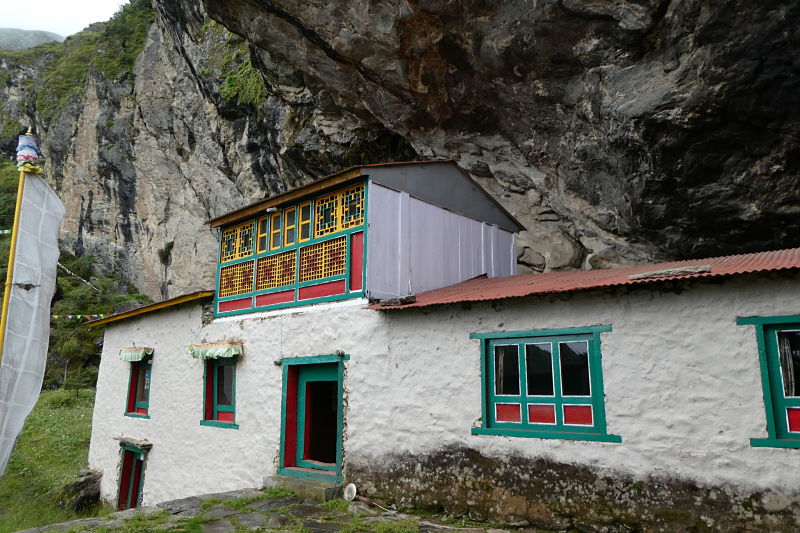
Thamo 2 – Chhyarok Gompa (3,961 m) It is a monastery located in a hidden place under a very spectacular rock wall. Currently (2019) there is only one ani (82 years old) living there. Sherpa climbers before to engage in a expedition go to ask her about if there is a good or bad omen as well as for blessing. If auguries are bad, most decline to participate in the expedition.
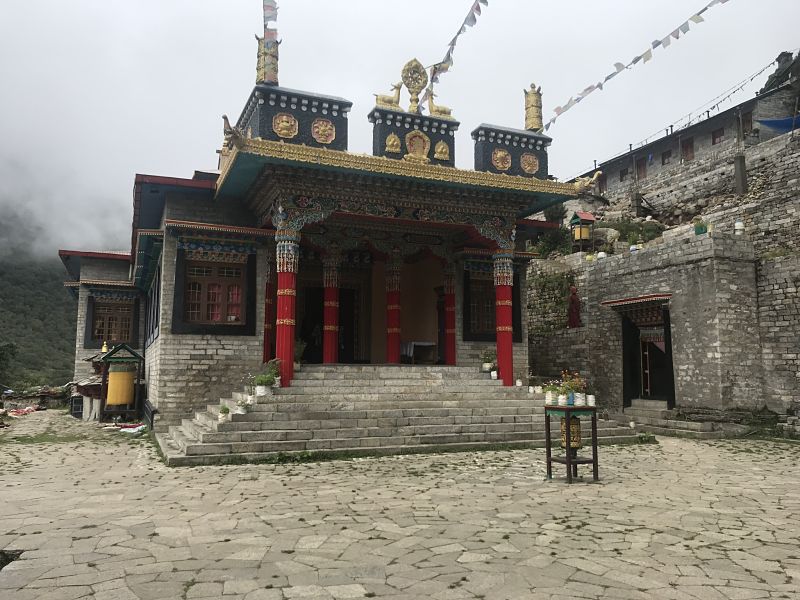
Thamo 3 – Khari Dhogan Ganden Tenpheling (3,550 m) It is a nunnery located at the top of the village of Thamo. It was founded by Khari Rinpoche Lobsang Tsultrim in 1962. After his death in the year 1970, the monastery entered a period of decline until 2002, when, at the request of the Dalai Lama, Lama Tenzin Yonten built the present magnificent monastery where 30 anis live permanently.
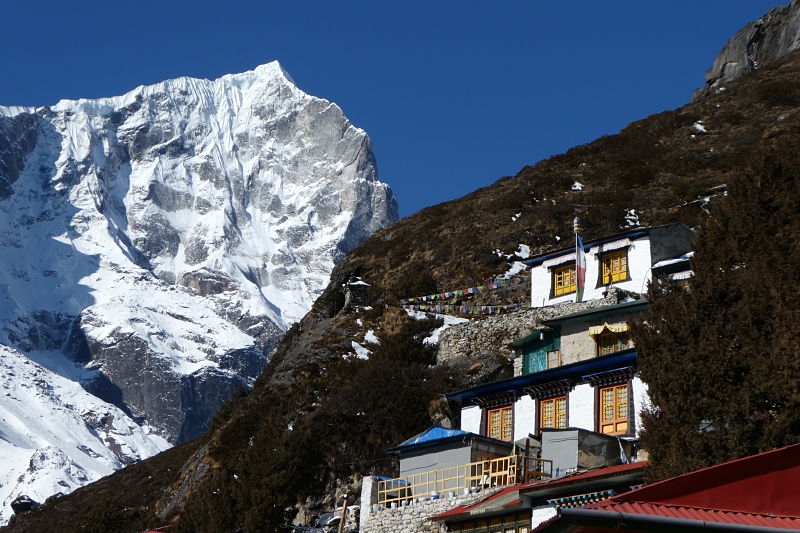
Thame 1 - Dechen Chokhorling Gompa (3,995 m) This is another of the first three monasteries of Khumbu. It was founded by Lama Ralpa Dorje (also known by Rolpe Dorje) between 1667 and 1672. Built below a cliff above the village of Thame, it is an exceptional viewpoint of the area. In 1952 was transformed into a monastery of celibate lamas. Currently there are 30 lamas living in the monastery. A 9 year old boy from Jorsale, who is the reincarnation of the prior Lama Ngawang Gyaltsen Rinpoche. is now being educated to became the next reincarnate lama. The 2015 earthquake heavily damaged it but in two years was completely rebuilt. The festivals of Mani Rimdu (May-June) and Dumji (June-July) that take place in this monastery are considered more genuine by Sherpa people because there are few tourist attending them . The monastery keeps 108 Ka-Gyur and 220 Ten-Gyur.
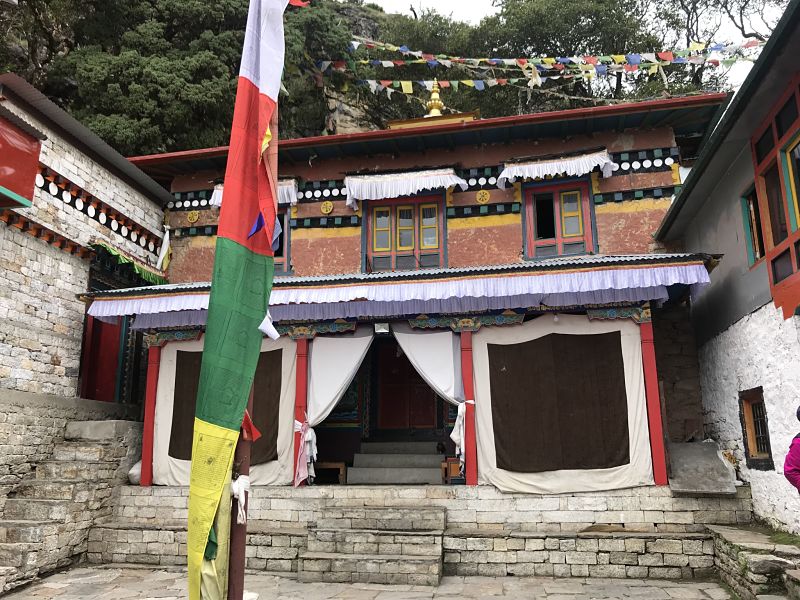
Thame 2 - Kyarog Sang-Ngag Chöling Gompa (3,800 m) It is the last monastery on the trail that goes from Namche to the Nangpa La which was the pass through which traders crossed the Himalayan mountains, when the border with Tibet was open. It is believed to have been founded at the beginning of the 18th century by Lama Rolpe Dorje (is not the same who founded the Thame monastery). Located in a slightly higher wooded area in the upper part of Thame, it is best known for the religious celebration of Tsogchen, the 10th day of the 5th month of the Tibetan calendar.